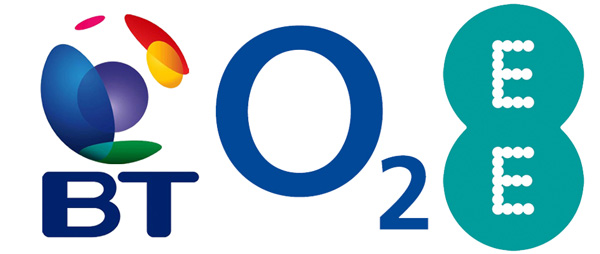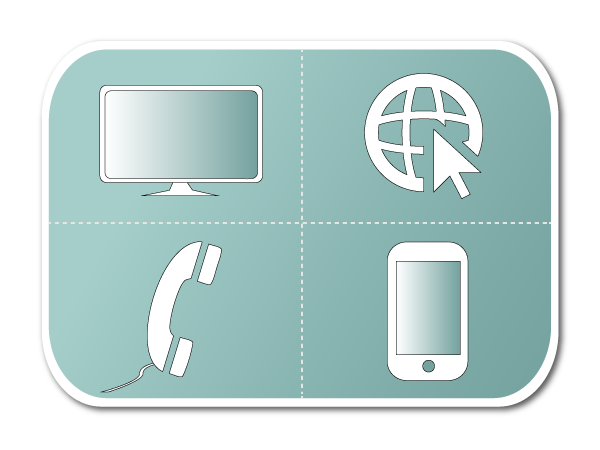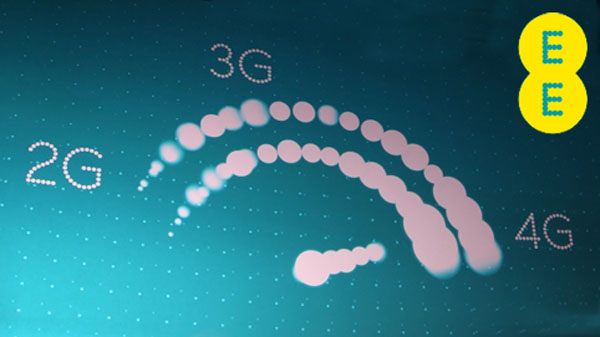
Yesterday evening BT confirmed it was in exclusive talks to acquire EE thus bringing an end to the deliberation over whether the firm would make a bid for market leader EE or smaller rival O2. Now that BT has confirmed it is going after EE, the question is raised – why did the firm choose EE over O2 when the latter would have cost significantly less and presented less regulatory hurdles? Here’s 5 possible reasons they picked EE.
1.Market Share
Without doubt, EE is leader of the UK mobile market and according to most recent figures, it holds 34 percent of the market (by revenue) in comparison to O2 who hold 28 percent market share. The key reason for BT choosing EE could be because it wants to lead the digital revolution in the UK over the next couple of years as the UK market is set for a boom in data and digital services consumption.
Rather than pick O2, the smaller of the two options, BT chose the market leader as the deal would mean it has the largest market share in both fixed line and mobile services. In a market that is moving towards consolidation and quad-play offering (more on that below), having the biggest market share (and largest number of customers) means BT has an instant database of customers to push other services upon.
2. Quad Play market

The future of the UK telecommunications market is very much a quad-play field where a single operator will provide broadband, landline, television and mobile services to customers in a single package. Whilst BT ticks the first three boxes in abundance – it’s the market leader in broadband and landline and with £1.6 billion spent on acquiring Premier League and Champions League television rights it is soon to dominate television as well – it definitely lacks in the mobile market.
In comparison, EE is already a quad-play operator offering broadband and landline (through EE Fibre), television (through EE TV) and mobile services and whilst the former are easily dwarved by BT’s offering, it’s EE’s mobile offering that really stands out. The network has the biggest and most advanced 4G LTE network in the UK (covering over 75% of the population) and is significantly better than O2’s offering.
3. Network

This ties in with the point above and the point below (Infrastructure) but simply put – EE is the biggest and most advanced network in the UK. Formed of the merger of two of the biggest networks – Orange and T-Mobile – back in 2010, EE has a significant advantage over its rivals (although Vodafone is coming close).
In comparison, O2’s network has lagged behind EE and is only slightly more advanced than Three’s network, despite the latter launching 4G almost a year later. O2 also have a commitment to offer 98% indoor 4G coverage by 2017 – as a result of capturing the 800MHz spectrum in the 4G auction – and would require significant investment to meet this requirement.
4. Infrastructure

This is probably a key reason that BT opted for EE over O2; the latter’s network requires significant investment to meet the expectations of customers, achieve targets set by regulators and provide a competitive network. O2 only captured the 800MHz spectrum in the 4G auction which means it’s able to provide 4G across long distances – once implemented that is – but is not able to offer superfast service (such as 300 Mbps LTE Advanced) which require two spectrum bands.
In the same spectrum auction, EE spent a lot more than O2 and captured both the 800MHz and 2600 MHz spectrum (the latter being used for delivery of superfast 4G) and BT also captured the 2600 MHz spectrum. Acquiring O2 would require BT to use its own spectrum to provide superfast 4G (and it would be limited at that) whilst acquiring EE means BT can increase the capacity and capabilities of the already-impressive existing network.
Conclusion – was BT right to go for EE?

On the face of the information presented, the only answer can be a resounding yes. Acquiring EE is set to cost around £12.5 billion in cash and shares (EE’s two owners – Deutsche Telekom and France SA – are set to receive 12% and 4% in BT respectively) whilst O2 would have cost less at between £9 and £10 billion.
With a 25% higher acquisition fee, EE requires a larger investment but offers more synergies and possibilities than O2 as the former is already established as the de facto market leader whilst the latter would require significant investment to successfully challenge both EE and Vodafone.
The news about BT considering either EE or O2 originated from the latter’s parent company – Telefonica – who were eager to ‘flog’ their UK operation in the face of dwindling profits and uncertainty in the Spanish economy. What the failed attempt to sell the network means for O2 and its customers, however, is the story for another day but for now, Telefonica have failed and their loss is certainly both BT and EE’s gain.
